Contents Overview
iPhone
Mac
iPad
Apple Watch
AirPods
Additional: Accessories and gadgets to postpone purchasing
October presents an ideal opportunity to invest in certain Apple devices while postponing others. Apple has recently unveiled its latest iPhone and Apple Watch models equipped with the A19 chip, delivering enhanced speed, superior health monitoring, and upgraded audio capabilities. If you’re considering refreshing your smartphone or wearable tech, now is an excellent moment to act.
Conversely, for Macs, iPad Pro, and professional-grade accessories, patience is advisable. Apple is anticipated to release the next-generation M5 chip alongside ecosystem enhancements such as Wi-Fi 7 and Ultra Wideband 2.0 either later this year or early 2026. Preliminary insights suggest a remarkable boost in performance, with the upcoming M5 iPad Pro expected to offer roughly 36% improved graphics compared to the M4 variant.
Purchasing a Mac or iPad Pro at this juncture risks owning soon-to-be outdated technology. Therefore, the strategic approach for October 2025 is straightforward: acquire mobile and wearable devices now, but delay buying professional computers and accessories until the new releases arrive.
iPhone: Why the A19 Series Is a Smart Buy
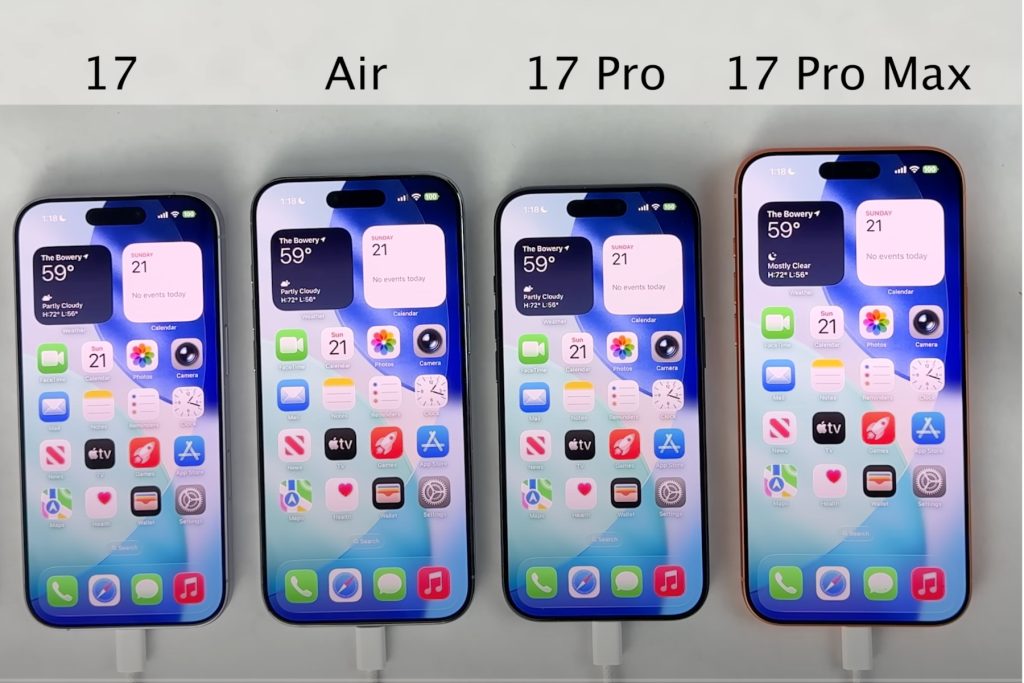
Image credit: UltimateiDeviceVids on YouTube
The 2025 iPhone collection, powered by the A19 and A19 Pro processors, represents one of Apple’s most robust upgrades in recent memory. If you’re planning an upgrade, most models in this lineup are highly recommended this October.
Recommended Models
- iPhone 17 Pro Max: For those seeking the pinnacle of iPhone performance, this model is unmatched. Equipped with the A19 Pro chip, it boasts a 6-core GPU and 12GB RAM, delivering desktop-grade power. It also introduces a massive 2TB storage option, ideal for professionals handling large ProRes RAW or spatial media files. Prices start at $1,199 for 256GB and reach $1,999 for 2TB.
- iPhone 17 Pro: This compact powerhouse caters to creatives, featuring a 48MP telephoto lens with 8x optical zoom and support for ProRAW, ProRes RAW, and Apple Log 2 formats. Its USB-C port supports USB 3 speeds, enabling file transfers up to 20 times faster than non-Pro models. Pricing begins at $1,099 for 256GB.
- iPhone Air: Notable for its ultra-slim 0.22-inch titanium frame, the iPhone Air is perfect for users prioritizing style and portability. However, it compromises on battery life (up to 27 hours), lacks stereo speakers, and offers slower USB 2 transfer speeds. It starts at $999 for 256GB.
- iPhone 17: The ideal choice for most users, this model features the A19 chip, a 6.3-inch display, 2x optical zoom, and 8GB RAM. It balances strong performance with affordability, starting at $799 for 256GB.
- Budget Alternatives: For those mindful of cost, the iPhone 16, 16 Plus, and 16e remain viable options. Powered by the A18 chip, these models have seen price reductions following the 17 series launch. The iPhone 16 starts at $699 (128GB), the 16 Plus ranges from $799 to $899, and the 16e begins at $599. While they offer solid performance, they lack the advanced cameras, displays, and speed enhancements of the A19 lineup.
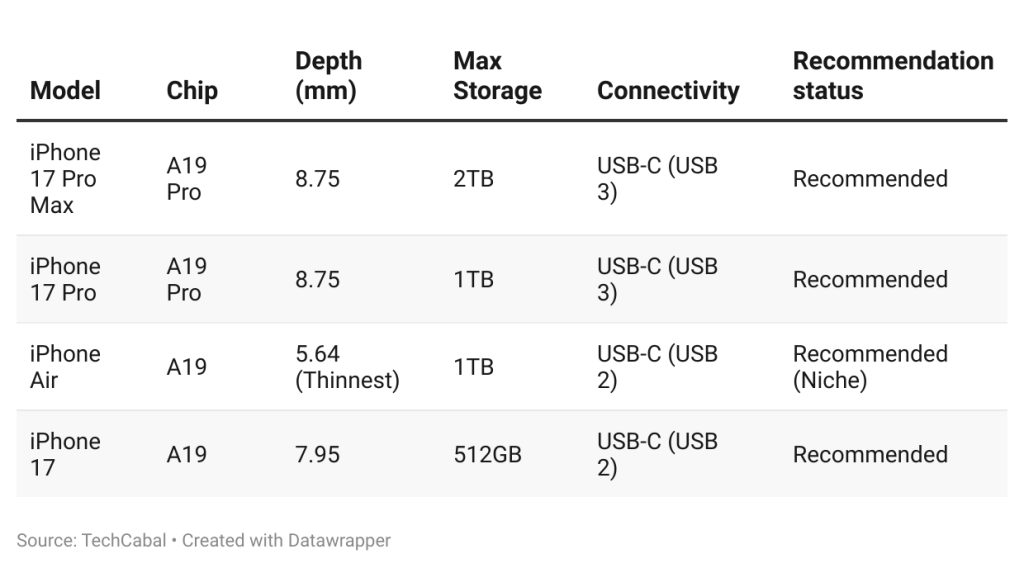
Mac: Wait for M5, Purchase M4 Only If Necessary
The Mac range is currently in a transitional phase as Apple prepares to launch the M5 chip, promising substantial performance gains. Consequently, it’s wise to delay purchasing most high-end Macs, although some M4 models remain practical choices if immediate need arises.
1. Hold Out for M5: MacBook Pro and Studio Display
The 14-inch and 16-inch MacBook Pro models now run on M4 Pro and M4 Max chips. Apple is expected to refresh these with M5 processors later this year or early 2026. For users engaged in intensive creative or computational tasks, waiting will grant access to enhanced GPU capabilities and faster Neural Engine speeds.
The Studio Display is also slated for an update, likely introducing a 27-inch mini-LED version with improved brightness and contrast. If a new display is on your list, postponing your purchase is advisable.
2. Acceptable Choices: M4 Macs
If you require a Mac immediately for work or study, the M4 MacBook Air (13-inch and 15-inch) and 24-inch iMac are dependable options. They offer solid speed and efficiency, with no expected updates until 2026.
The Mac mini (M4/M4 Pro) and Mac Studio (M4 Max/M3 Ultra) also deliver robust performance, capable of handling demanding workflows and multiple monitors. These remain worthwhile purchases, though power users might prefer to await the M5 generation.
3. Avoid These: Mac Pro and Pro Display XDR
The Mac Pro, still equipped with the M2 Ultra chip, is now two generations behind. Its modular design no longer justifies its premium price, especially compared to the superior performance of the Mac Studio.
The Pro Display XDR, released in 2019, is outdated and due for replacement. Investing in it now is not recommended.
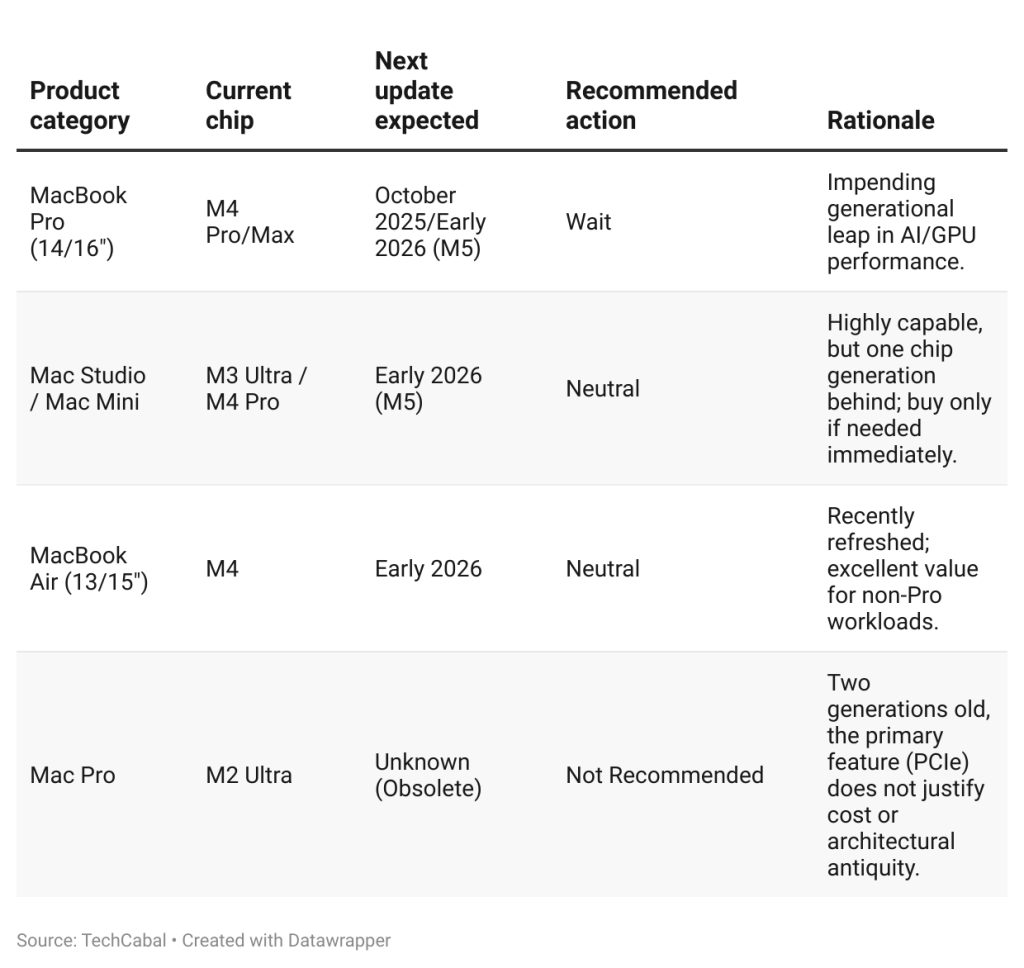
iPad: Delay the M5 Pro, Opt for Air or Mini Temporarily
The iPad Pro is the model to avoid purchasing this October. Apple is expected to release new 11-inch and 13-inch iPad Pro versions featuring the M5 chip, which promises approximately 36% enhanced graphics performance over the M4 model. This upgrade will elevate the iPad Pro to near-desktop power, ideal for advanced video editing, 3D modeling, and AI applications. Rumors also mention a new portrait-oriented front camera and a faster 45W charger included in the package. If you’re eyeing the iPad Pro, waiting is the wiser choice.
Alternative Options: iPad Air and Entry-Level Models
- The 11-inch and 13-inch iPad Air models, powered by the M3 chip, offer excellent performance for most users. They provide a balanced mix of power and affordability, suitable if you don’t require the highest-end Pro features.
- The iPad mini (A17 Pro) remains a fast, compact tablet. An OLED version is anticipated in 2026, so consider holding off if display quality is a priority.
- The 11-inch iPad (A16) continues to be the best budget-friendly entry into the iPad family. It’s reliable for everyday tasks and ideal for those needing a straightforward, capable tablet.
Apple Watch: Upgrade Your Health and Fitness Experience
Apple refreshed its entire Watch lineup in September 2025, making this an optimal time to purchase.
- Apple Watch Ultra 3: Designed for outdoor enthusiasts and adventurers, the Ultra 3 now supports two-way satellite messaging, allowing communication with emergency services and contacts even without cellular coverage. It features the largest Apple Watch display to date, extended battery life up to 42 hours (or 72 hours in Low Power Mode), and 5G connectivity. A new Hypertension Notification monitors heart data over 30 days to detect potential high blood pressure. Pricing starts at $799.
- Apple Watch Series 11 and SE 3: The Series 11 offers a faster processor, brighter screen with slimmer bezels, and up to 24 hours of battery life, making it a significant upgrade for users with older models. The SE 3 provides many Series 11 features at a more affordable price, including 18 hours of battery life and rapid charging. Apple is evolving the Watch into a regulated health device, not just a fitness tracker, making these models smart investments for the future.
AirPods: Enhanced Audio and Health Integration
The newest AirPods blend superior sound quality with advanced fitness tracking like never before.
- AirPods Pro 3: Released in September 2025, these are the top choice for most users. They include built-in heart rate monitoring and support over 50 workout types via the Fitness app. The earbuds sync seamlessly with your Watch and iPhone to provide real-time metrics and coaching. Audio improvements include stronger Active Noise Cancellation that blocks twice as much ambient noise. Battery life extends to eight hours with ANC active. A new Live Translation (beta) feature allows real-time conversation translation. Price: $249.
- AirPods 4 (Standard and ANC): The updated AirPods 4 models are excellent budget-friendly options. The ANC variant offers improved noise cancellation and sound quality compared to the standard version.
- AirPods Max (USB-C): While the Max delivers exceptional audio, it lacks the latest health tracking and smart audio features found in the Pro 3. With no new model expected until 2027, it’s best suited for those seeking premium headphones primarily for music and movies.
Additional: Accessories and Devices to Postpone Buying
Several Apple accessories and gadgets are slated for major updates in October 2025. If you’re considering any of these, it’s prudent to wait.
- Apple Vision Pro (1st Generation): The current Vision Pro runs on the M2 chip, but the upcoming Vision Pro 2 is expected to feature the faster M5 chip and a redesigned headband. Given its $3,500 price, waiting ensures better performance and longer-term value.
- Apple TV 4K (3rd Generation): A new Apple TV model is anticipated, likely incorporating Wi-Fi 7 and a more powerful processor. This will enhance 8K streaming and spatial audio quality, so delaying your purchase is advisable.
- AirTag (1st Generation): The next-generation AirTag 2 is expected to offer tracking ranges up to three times greater, thanks to a new Ultra Wideband chip. Buying the current model now is less sensible with an improved version imminent.
- HomePod mini (1st Generation): The forthcoming HomePod mini is expected to include a faster chip and support for Apple’s Intelligent features, promising enhanced smart home performance. Waiting is recommended.
- HomePod (2nd Generation): The full-sized HomePod remains an excellent choice for premium sound, especially in stereo setups. No major updates are expected this year, so it remains a safe purchase for audiophiles.
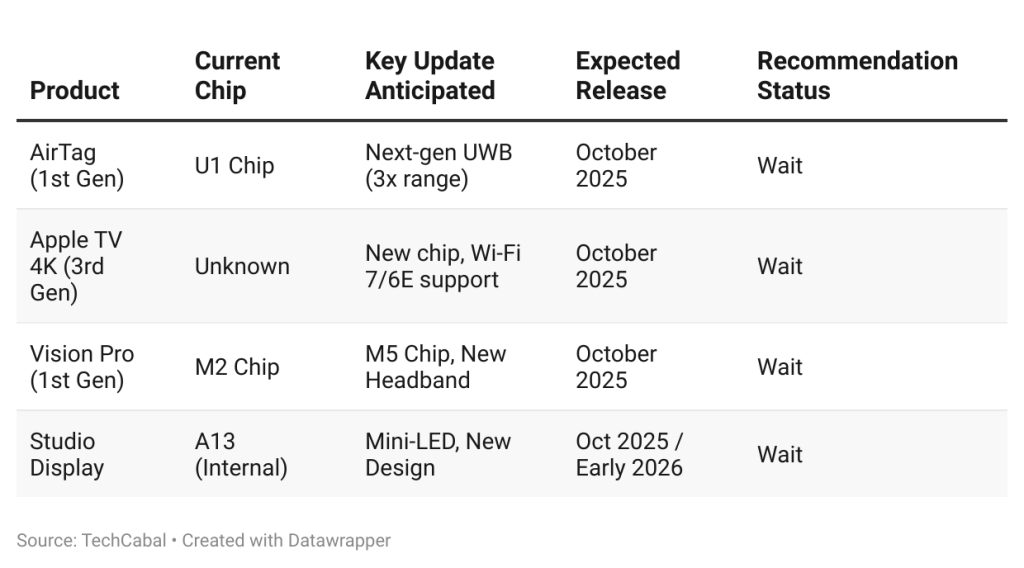






















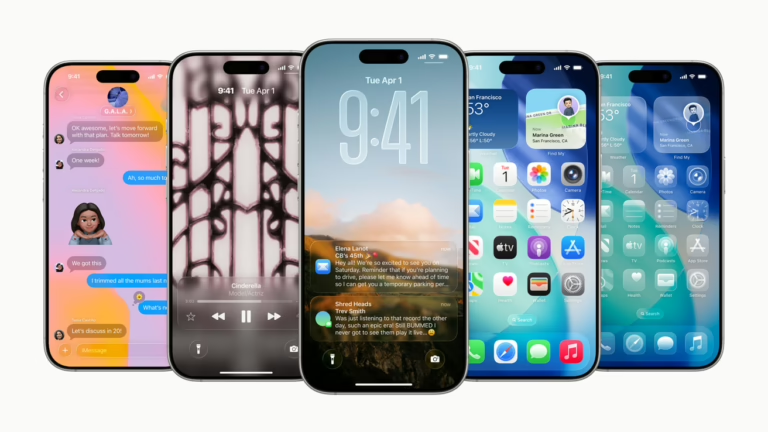
0 Comments